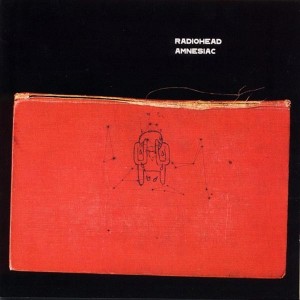Apple, Amazon, or Google: Who Will Rule the Cloud (if anyone)?
The ‘invisible’ storage market has become the latest ‘trend’ amongst the big tech companies. This is having a major impact on the music industry, as record companies scramble to figure out how to make people pay once again for the music they have grown to accept as free. The most recent battle is in the clouds. I’m not talking about Lando Calrissian and Cloud City (although I sort of wish I was). I’m talking about Clouds – capital C, people. Clouds are basically storage servers that exist on the ground, but sound much cooler when projected many miles in the sky, sort of like heaven. Depending on the music service, the Clouds generally allow you to upload your music to the Cloud, and stream it at a later point in time, wherever you have internet connection. This means that you don’t necessarily need to physically have any songs at home or on your portable music devices – you just need to upload them at some point, and theoretically access them anywhere, anytime.
The major players right now are Amazon, Google, and Apple, each offering their own perspective on both costs and the music that is available through their services. Below is a summary of things as they sit in the cloud stand.
Amazon Cloud Drive
The Amazon Cloud Drive was announced on March 29, 2011. You get 5 GB free with Amazon Cloud Drive. You can upload a variety of media, such as music, pictures, and movies. If you purchase music from Amazon’s MP3 store, the music will automatically be stored in their Cloud Drive, and this will not count towards your storage limit. Afterall, there must be SOME perks to buying music from the cloud supplier.
After 5 GB, the pricing plan begins. You can get 20 GB of storage for $20 a year, which allows you to store an unlimited number of songs, but a certain amount of other media. You can get up to 1000 GB of storage, which will cost you $1000 / year. Basically, $1 for a GB. The Amazon FAQ even tells those evil company IT workers how to block streaming of the Cloud Drive to your company network. You also need to be in the USA (or have a US IP address…..) to sign up. Another reason why being a Canadian sucks, eh?
You can also access this Cloud on your mobile phone, and not just on the Web at a home or work computer. There is a free Android app, called Cloud Player, that lets you stream the music you have uploaded, or you can access it in offline mode for when you don’t have internet connection (think On a plane, or drilling to the centre of the Earth). There is also a third party app for the iPhone, called aMusic – A native Amazon Cloud Music player, made by Interactive Innovative Solutions LLC. This currently costs $1.99 but is only available in the USA.
Google Music
Google Music was announced in May 2011. It is currently a Beta version, so who knows what the future holds. Rather than bore you with text, check out a quick Google Video on how Google Music works.
[youtube ZrNhKcxBbZo]
Essentially, you can upload 20,000 songs to Google Music – for free! Like most Google services, you need an invitation to join the fun. Like the Amazon Cloud, you also need to be in the USA (or have a US IP address…..) to sign up. You can listen from the web, or listen on your Android phone device with a free app. There is also a third party app, called gMusic: A native Google Music player and made by Interactive Innovative Solutions LLC for the iPhone. NOTE: Look for an interview with James Clancey from Interactive Innovative Solutions in a post tomorrow. This is not an official Google app, but amazingly, Apple has allowed a direct competitor to create an app for a music Cloud service. Steve Jobs previously said this would only happen over his dead body…er…too soon? This app is available in Canada, although Google Music itself is not.
Apple’s iCloud
Apple’s iCloud was announced in June 2011. The iCloud lets you store data (like music files, photos, etc) for download to multiple devices such as iPhones, iPods, iPads, and computers for listening whenever you like. iCloud replaces the MobileMe service, for those familiar with that.
Like Amazon, you get 5 GB of free storage; and content purchased from Apple is stored without charge. Any music files purchased through iTunes are automatically downloaded to any registered Apple device. Additional space will set you back $20 per year for 10GB, $40 per year for 20GB, and $100 per year for 50GB.
The ‘bonus’ feature of the iCloud is iTunes Match. For an annual charge of $24.99, customers can scan and match tracks in their iTunes music library with tracks in the iTunes Store. This includes tracks copied from CDs or other sources (read: illegal downloading). The iTunes Match isn’t out just yet, however.
Verdict
GUILTY! If PHM were to handicap the Cloud Wars (copyright!), the free (for now…) Google Music or the Apple-backed iCloud would be your best bet. Head to the bookies! (Note: PHM doesn’t like bookies – PHM likes their digits intact…) And as cheesy and cliche as it may sound, the ultimate winners are the music fans. The better the competition, the better the prices and the services. People are slowly warming up to streaming (and even caching with offline access to) music. The music access future looks bright. And with my 80GB iPod conveniently biting the dust 2 days after getting the iPhone 4S, it appears one of these clouds will be getting 80GB of music heading their way shortly.
Follow us on Twitter and on Facebook and you’ll live 10 years longer (note: you will not live 10 years longer, but your life will be much more fulfilled).
















1 Response
[…] you’ve had a chance to read yesterday’s summary of the different Cloud music services. Currently, of the major 3 services, the Google Music one (which is still in Beta format) is the […]